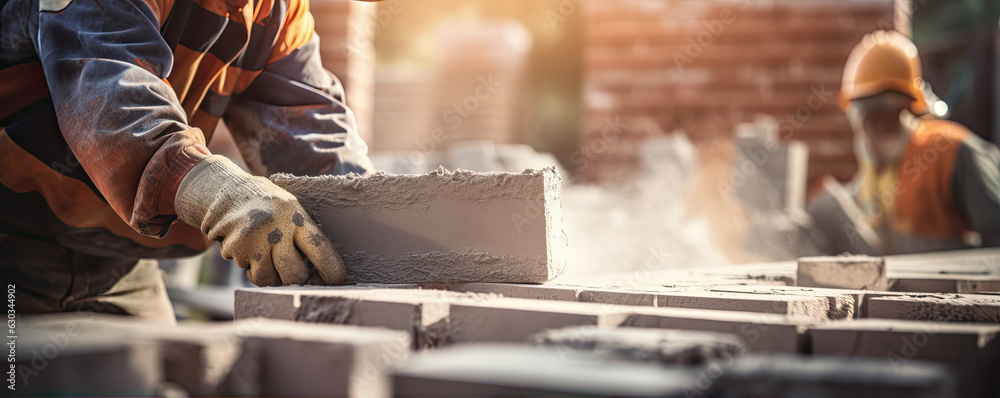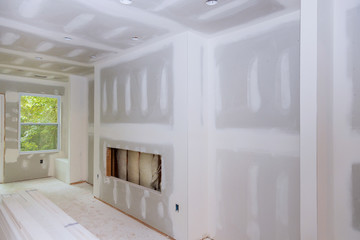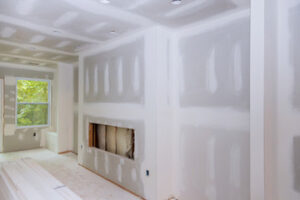Masonry is a beautiful building material that will stay in style for decades. It adds a classy and elegant element to any property, making it more attractive to buyers. Pro Angle Masonry Charleston can also help repair and restore historic or existing masonry buildings. It requires specialized expertise, such as understanding wall systems and condition assessments.

Masonry is a skilled trade that requires physical strength and tool knowledge. The career can be demanding, but it can also be rewarding. The Bureau of Labor Statistics estimates that masons earn a good wage for their work.
Whether you need a small repair or a home renovation, a professional mason can do the job right. Their experience will allow them to complete the task quickly and accurately. They can also provide you with competitive pricing on materials, which is a major benefit for homeowners.
The primary goal of masonry is to construct strong, lasting structures that are safe for humans and animals. However, masonry is also an art form that can add a unique visual element to buildings and other facilities. This art form can also serve as a source of pride and inspiration. Masonry is a great way to showcase an individual’s creative talents and skills.
Professional masons have years of experience with different materials and can use these skills to create beautiful, long-lasting structures. They also have the experience and expertise to ensure the work meets all building codes and regulations. Masons can also complete the challenges of working in the field, such as the weather and other factors affecting their work.
Many homeowners attempt masonry projects themselves, but this can lead to safety hazards and costlier repairs. The resulting poor quality of artistry can damage your home and decrease its value. Professional masons will ensure that all construction is up to code and follows the industry’s best practices.
Masonry workers, also known as masons, use bricks, concrete and concrete blocks, and natural and manufactured stones to build walls, walkways, and other structures. The profession is considered a skilled trade, typically requiring a high school diploma or equivalent. Technical schools and apprenticeship programs offer training in masonry. These programs can be provided both independently and in conjunction with on-the-job training.
Masonry is an artistic trade that allows for a wide range of creativity. Masons can use brick, stone, concrete blocks, and natural or manufactured stones to create structures that enhance the beauty of a home or building. Unlike other construction materials, masonry structures are durable and can stand the test for centuries. Also, masonry structures are fire-resistant, providing homeowners safety and security.
The profession also offers plenty of opportunities for advancement. As a mason, you can work up the ranks to become a foreperson or project manager. You can also specialize in a particular area, such as historic restoration or custom design work. Masonry is a great career choice for those who want to build a fulfilling and creative life.
Masonry has undergone several significant advancements, combining timeless craftsmanship with innovative techniques. These developments have made masonry more versatile, allowing various unique aesthetics and functionalities. Whether you’re considering new construction or renovating an existing property, staying up to date with the latest trends in masonry will ensure that your project is stylish and practical.
For example, extending living spaces into the outdoors has seen growing popularity. This type of design has been made possible by the versatility of masonry, which can be used to create comfortable patios, fire pits, and more. Additionally, masonry can be used to build beautiful outdoor water features that add a serene atmosphere to an outdoor space.
Professional masonry contractors can complete your projects quickly and efficiently, saving time and money. They will also have the skills and knowledge to deal with any unforeseen problems during the project. Furthermore, they will have access to the right equipment and materials, ensuring that your projects are completed to the highest standards.
When hiring a masonry contractor, ask about their experience and expertise. Ensure they have the skills and knowledge to handle your project and are licensed and insured. It will help avoid costly mistakes and ensure your project is finished correctly the first time.
Professional masons are skilled at work and can quickly and efficiently complete projects. They also have the knowledge and experience to tackle any challenges during a project. It saves homeowners time, money, and the stress of trying to solve issues independently. In addition, masons can help to ensure that the project is completed correctly, which can lead to a higher resale value for the home.
A career in masonry is a great option for those who want to avoid the cyclical nature of other trades and enjoy stable employment. It is also a great choice for those who like to travel and have flexible working hours. Masons can find work in various areas, including construction, renovation, and repair. In addition, masonry workers can benefit from the stability of union wages and benefits.
Masonry is also extremely durable and can resist a variety of environmental factors. It is resistant to fungus, mildew, and mold, and it is inherently water-resistant. As a result, it can protect homes and businesses from the elements and even reduce the risk of fires and electrical hazards.
If you are interested in becoming a mason, it is important to take the time to research the field and choose the best training programs. There are several programs available, including free apprenticeships and paid training. Regardless of which program you choose, find one recognized by the International Union of Bricklayers and Allied Craftworkers.
Many homeowners are worried that masonry services will be expensive, but this is not always the case. These services can be more cost-effective than other construction options. In addition, a qualified mason can provide advice about materials and costs and can offer competitive prices. They can also offer a warranty on their work, a major client selling point.
Masonry is a versatile industry with a wide range of career paths. From job site positions such as mason and laborer to management roles such as estimator, project manager, and superintendent, the opportunities for advancement are plentiful. In addition, this career is a great fit for those who prefer to work with their hands and are looking for more meaningful work than a typical office job.
Masons are skilled craftsmen who use brick, concrete blocks, glass blocks, tile, and terra cotta to build walls, walkways, and other structures. They can install ornate exteriors and construct skyscrapers, or they may build residential homes. Although masonry is experiencing a downturn in demand, it’s still an excellent option for people who want to work with their hands and contribute to building structures that future generations will enjoy.
In addition to a rewarding career, masonry offers excellent pay and benefits. Masons typically work full-time to balance their work and life easily. They also enjoy seeing the results of their efforts and know that their contributions will be appreciated by many. While some professions pay their employees a set salary regardless of how hard they work, the hardworking masons
Young masons learn to use various tools and materials in multiple applications during apprenticeship. They also work with experienced masons to gain valuable experience and build skills. This process is a good way to start without spending much on college tuition. In addition, apprentices often receive free lunch and dinner on the job to stay fueled throughout the day.
The career path of a mason is rewarding, but it can be stressful at times. According to NCCER, young masons must maintain a healthy work-life balance and make good decisions that will benefit them in the long run. For example, they should not skip personal protective equipment because it can lead to injury and even death. Additionally, they should avoid using drugs or alcohol on the job and adhere to all safety regulations.


